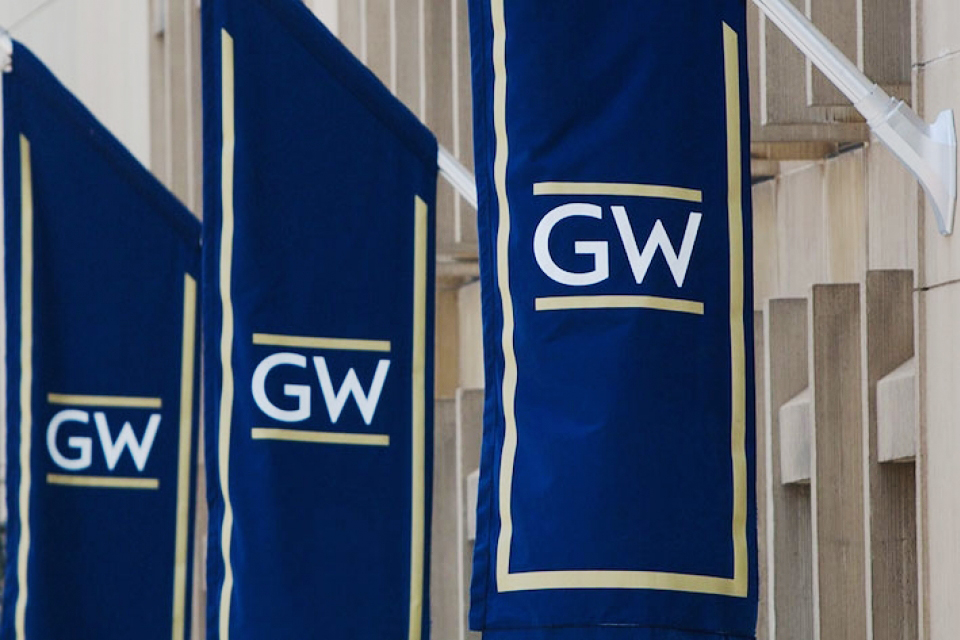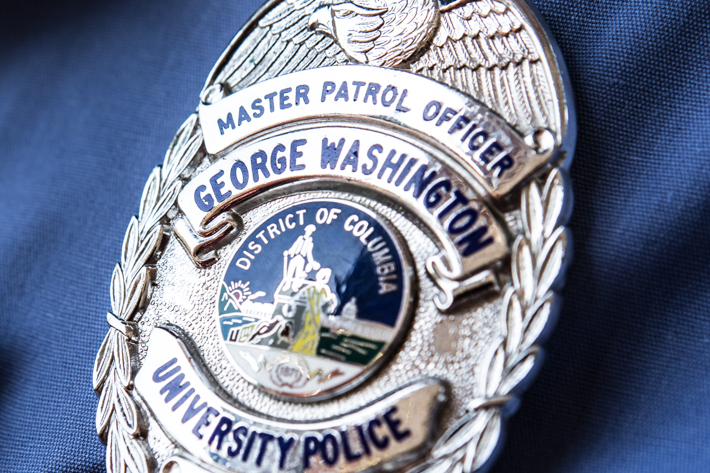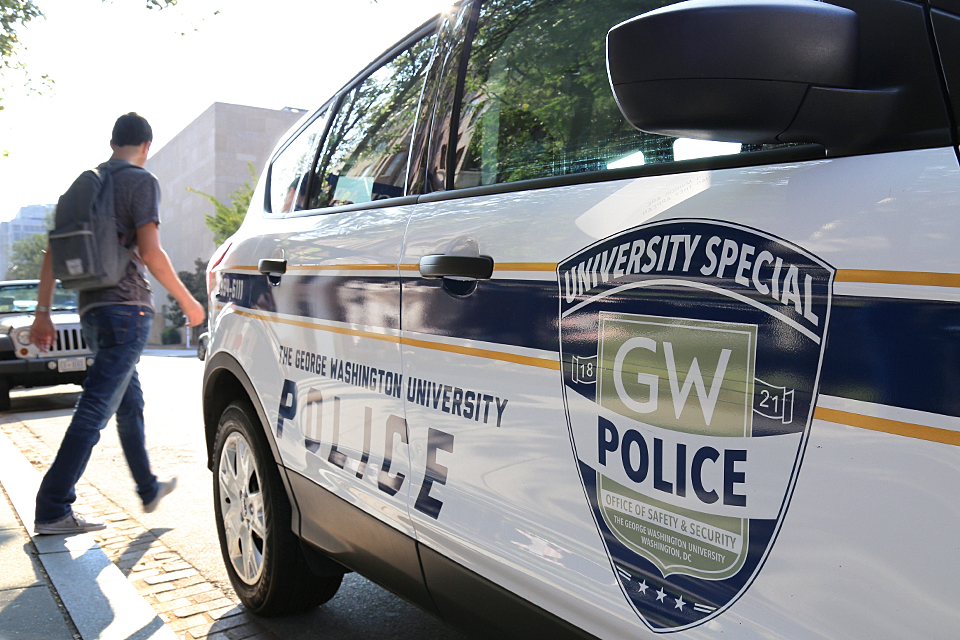The university released an infomail and a campus advisory Friday regarding emergency preparedness in the aftermath of the shooting in San Bernardino, Calif.
George Washington Today spoke with Senior Associate Vice President for Safety and Security Darrell Darnell, who highlighted several resources for members of the university community, including GW’s Emergency Response Handbook, GW’s Personal Alarm Locator app and guidelines to follow in the unlikely occurrence of an active shooter on campus.
Resources for the GW community
GW Police Department officers patrol the campus on foot, on bike and in patrol cars, Mr. Darnell said. The university maintains access control at residence halls. An extensive CCTV network throughout the Foggy Bottom Campus is used to monitor and review activity in public areas on campus.
Additionally, the university has created more resources for its students, faculty and staff. In August 2014, GW launched the PAL mobile app, which allows users to send rapid, location-specific alerts to the campus police dispatcher. The app, available for free download on both iOS and Android devices, also can receive campus advisory alerts.
In September 2014, the Office of Safety and Security and the university’s threat assessment team released a set of educational videos—one for students and one for faculty and staff—that emphasize the steps people can take before and during potentially threatening situations. Those videos are available to view online on the Division of Information Technology’s SkillPort website.
The videos, which outline paths to violent behavior, provide methods members of the university community can use to identify warning signs and prevent workplace and campus violence, as well as steps they can take to protect themselves during a violent event, such as an active shooter on campus.
It is important for the university community to review these materials, Mr. Darnell said.
“They provide valuable information on how everyone can assist in recognizing and reporting a potential threat to individuals or the university,” he said. “They also provide tips on how to assist emergency response personnel in responding to an emergency incident and how what actions to take will be communicated during an emergency. Because we take an all-hazards approach to emergency preparedness, the materials complement each other by addressing multiple emergency scenarios while also noting the common areas of preparedness for each scenario.”
All members of the GW community with a valid GW email address currently receive GW Alert emails. To customize GW Alert settings, students, faculty and staff can visit GWeb and select the “GW Alert Emergency Notification” tab. They can register their cell phone numbers and email addresses to receive text and email alerts on multiple devices, Mr. Darnell said.
Enhancing safety on campus
The university hired RaShall M. Brackney, a 30-year veteran of the Pittsburgh Bureau of Police, as the new chief of GWPD in May. She and Mr. Darnell sat down with GW Today in September to go over campus safety tips for new and returning students. Both emphasized constant awareness of surroundings as being important to personal safety, and if you see something, say something.
In November, GW, GW Hospital and Medical Faculty Associates participated in an emergency response exercise that simulated an active shooter scenario. Planning for the exercise began in June, Mr. Darnell said, and was a follow-up to an exercise the university conducted two years ago.
“The exercise was very useful in developing our emergency response and coordination efforts among university departments primarily responsible for responding, as well as our efforts in coordinating with the Metropolitan Police Department and other public safety officials within the District government,” Mr. Darnell said.





